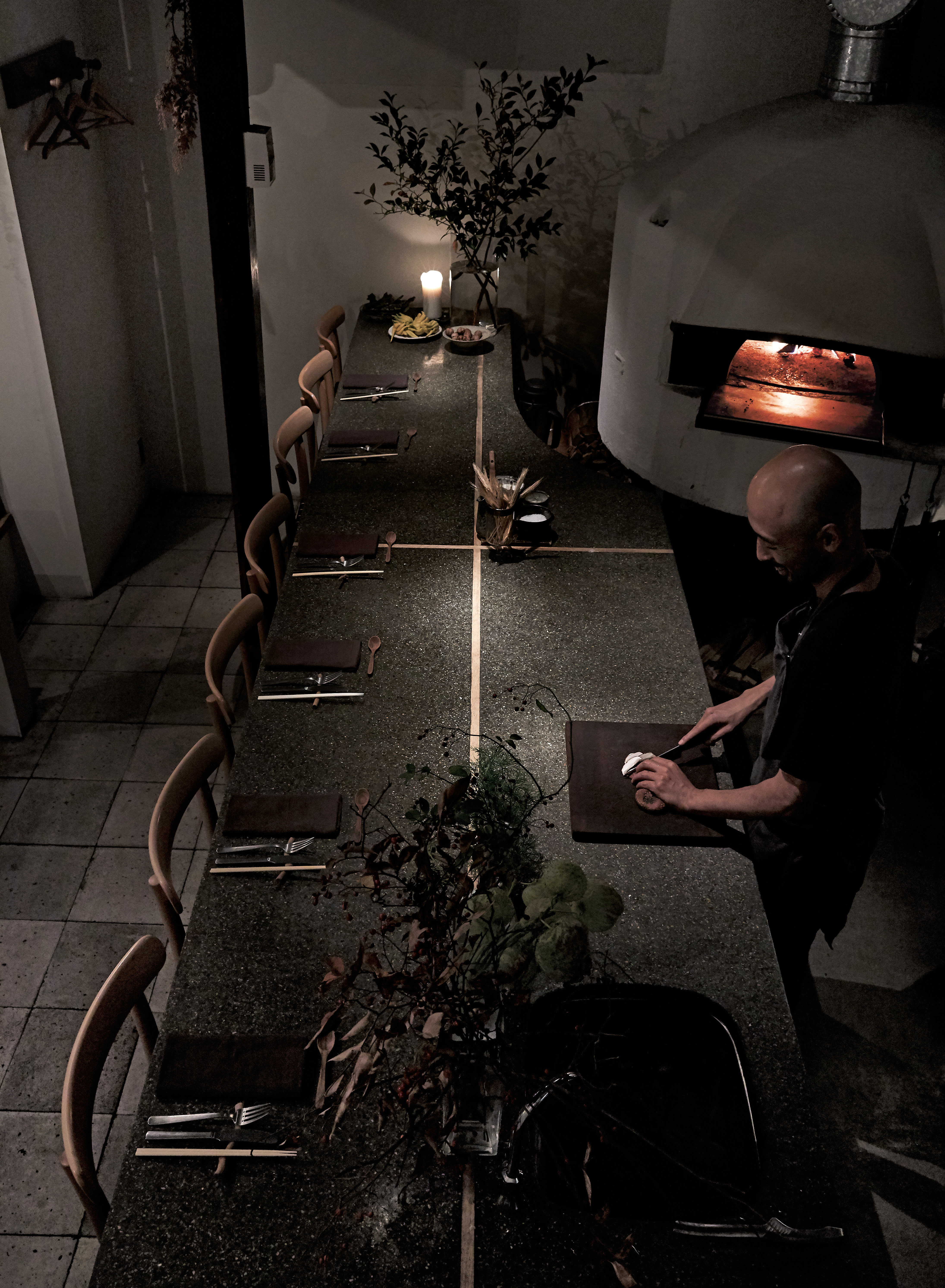
The interior that adds a poetic flourish to monk
Japanese craftsmanship, vintage British furniture and happy accidents add to this restaurant’s magical interior
What is it about monk, Yoshihiro Imai's 14-seat, seasonally inspired restaurant, set on the cherry blossom-lined Philosopher's Path in Kyoto? The path is a canal-side route, once frequented by local philosopher and university professor Nishida Kitaro and it's a fitting spot for Imai’s exacting, tranquil, contemplative restaurant, where he cooks over a fire, specialising in pizza, creating seasonal menus and favouring fresh, and sometimes wild local ingredients.
However, the restaurant’s international appeal stems not just from the food and the setting, but also from its interior design.
As Imai explains, in his new book, monk: Light and Shadow on the Philosopher’s Path, the 90-year-old place spoke to him immediately, when he first set eyes on it, back in 2015. “It was old, in rough shape, and if I’m honest, it was really hard to picture transforming it into a feasible restaurant. But as I gazed at it, I could see that it carried a certain presence, blending in nicely with its surroundings, and I made the decision to rent the property and open the restaurant there,” he explains.
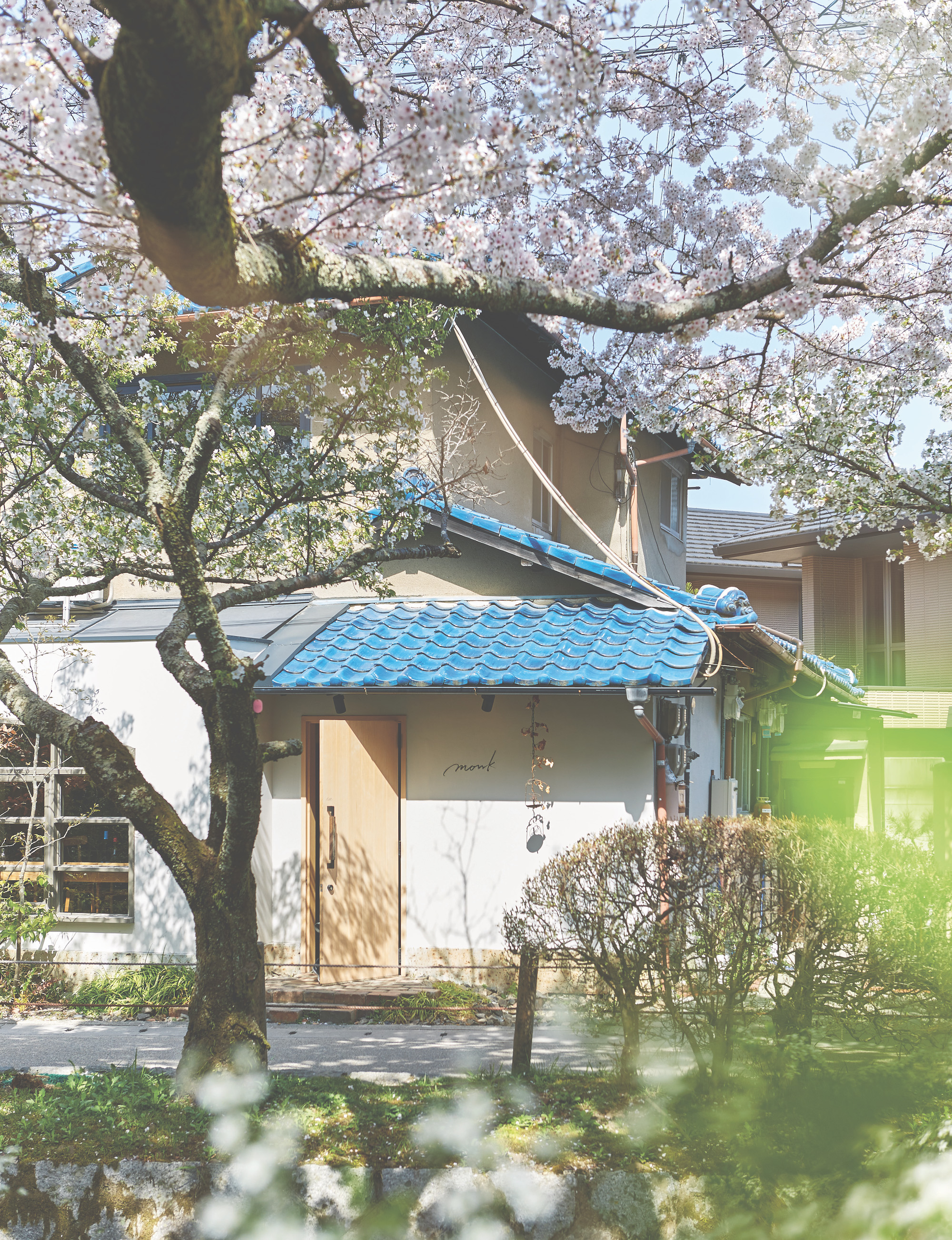
Having secured the building, Imai got in touch with the architect Yumi Kitahata from Studio Doughnuts, to draw up plans for the place. “The walls of the kitchen are made from a rare slate called Ogatsu from Iwate prefecture in northeastern Japan,” Imai explains. “The counter stools are from a furniture designer called Maruni Woodwork of Hiroshima prefecture in the Chugoku region, the far western end of Honshu, Japan’s main island. They are beautifully simple chairs, with a marvelously smooth wood surface.
“The dining chairs are vintage 1970s G-Plan chairs from the UK,” he goes on. “The tables were made by Jun Soeno, a craftsman based in Tokyo, who delivered them to Kyoto himself. They are delicate tables with a beautiful natural wood grain.
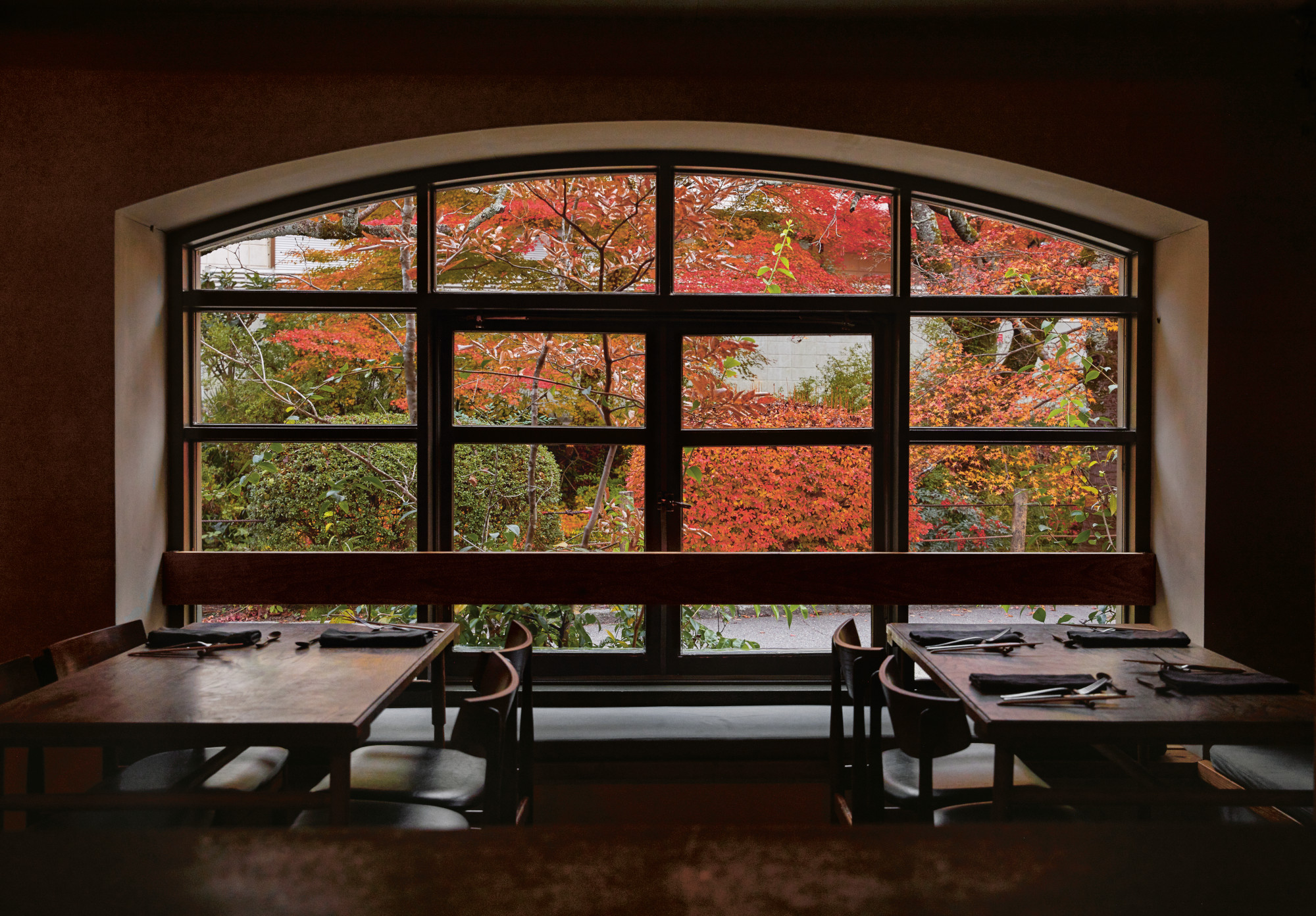
"The wide windows are arched at the top, so at night, the light of the restaurant spills out onto the dark Philosopher’s Path outside,” says Imai. “This was an element specially designed by Yumi, who was inspired to mimic the shape of the restaurant’s central feature, the pizza oven.”
All this careful planning and craftsmanship makes for a beautifully balanced place to cook and eat. However, it was the unexpected elements in the building’s interior that truly charmed Imai.
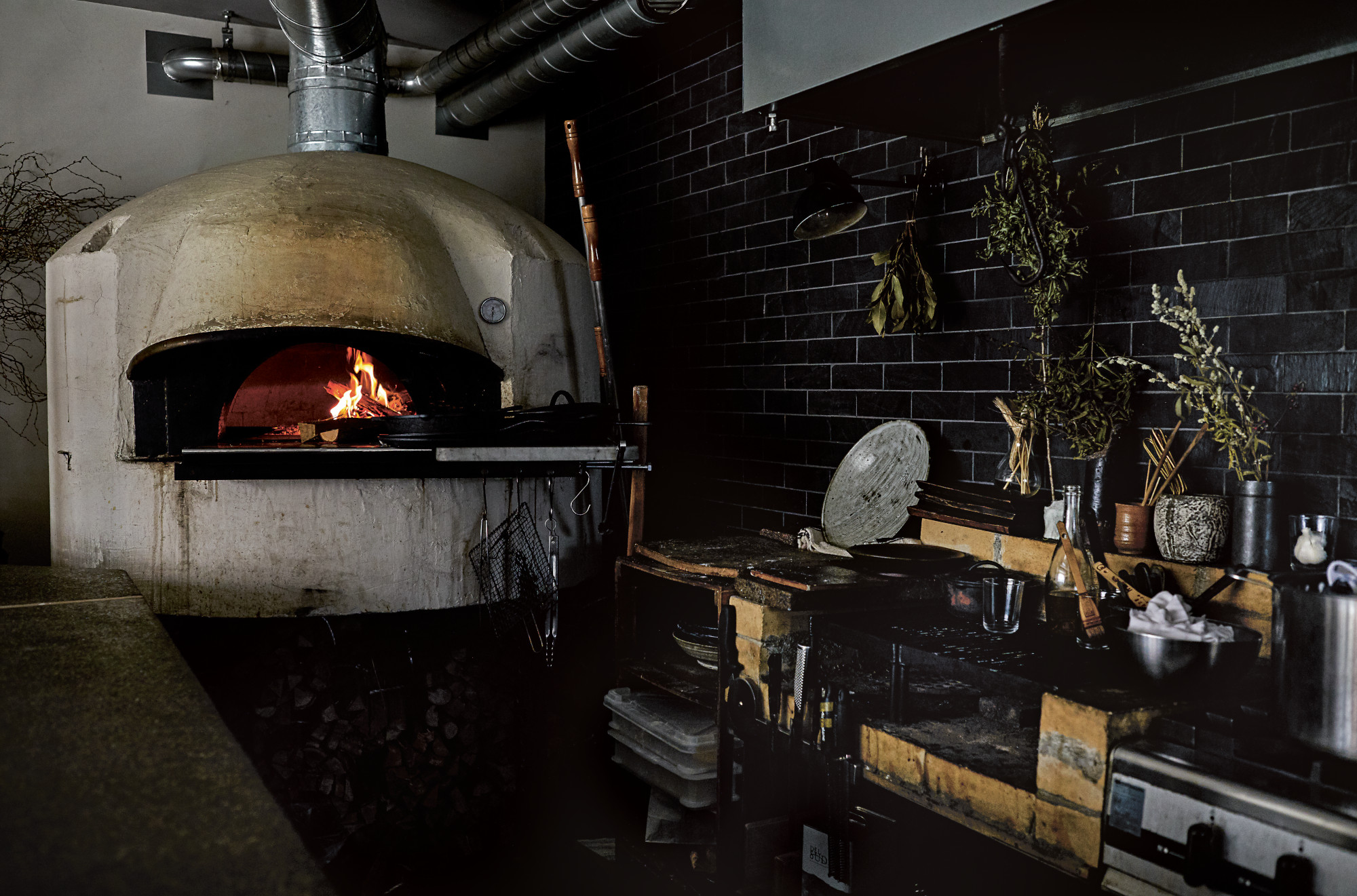
“Every day, I list the fresh ingredients of the day on a large clear menu board mounted on the wall,” the chef says. “I had asked to have the wall behind the board hollowed out so there’s space behind to place wildflowers that accentuate the seasons.
“Once construction was done, I wrote out the menu and adjusted the spotlight so it illuminated the board, when something unexpected happened. The light passed through the clear menu board, the flowers, and the space behind it, casting a beautiful shadow on the wall beyond. The dark stairwell leading up to the second floor was now adorned with the shadows of the daily handwritten text and flowers, and became an unplanned poetic moment, one of my favorites in the restaurant.”
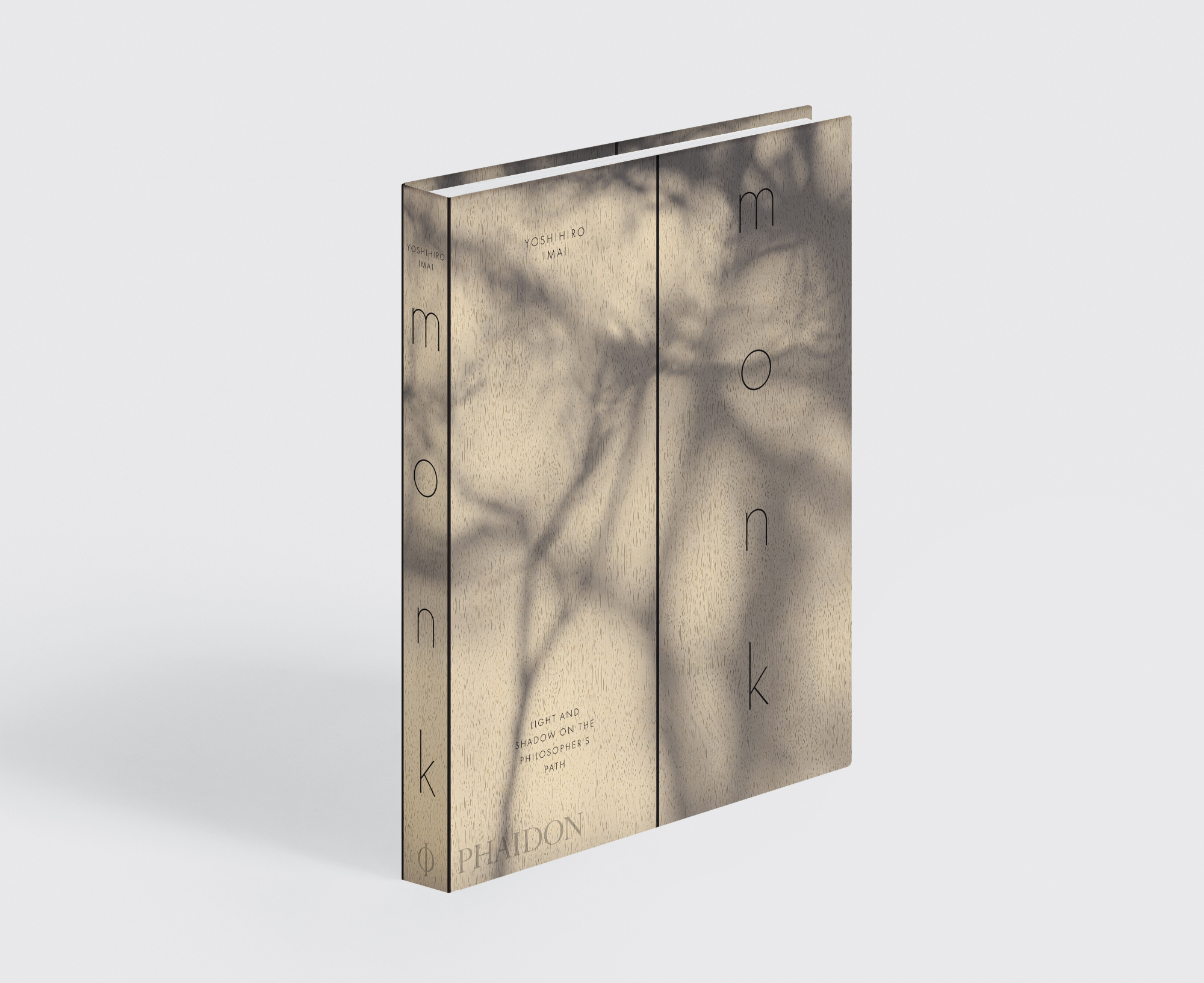
To see more pictures from this beguiling, and internationally acclaimed restaurant, as more recipes and personal reflections from Imai, order a copy of monk here.